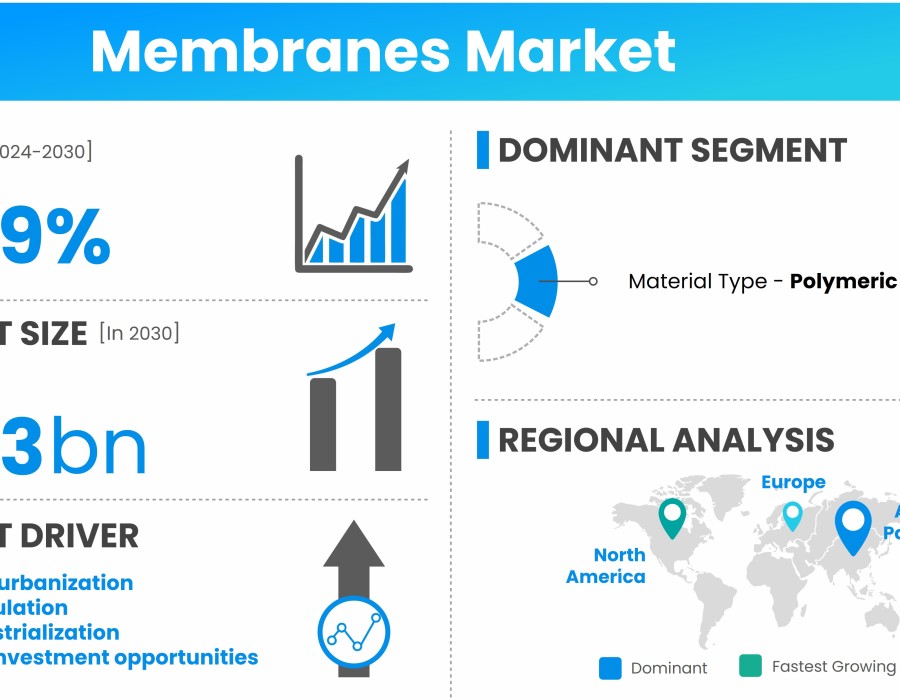The global membranes market is poised for significant growth in 2024, driven by rising demand across various industries such as water treatment, food and beverage, pharmaceuticals, and energy. Membranes, which are thin barriers that allow selective filtration and separation of substances, are essential for numerous industrial processes. Their efficiency in filtration, coupled with sustainability trends, is propelling the market forward. This article explores the key growth dynamics shaping the membranes market in 2024.
According to Stratview Research, the membranes market was estimated at USD 6.8 billion in 2023 and is likely to grow at a CAGR of 8.59% during 2024-2030 to reach USD 12.13 billion in 2030.
1. Rising Demand for Clean Water Solutions
Water scarcity and contamination are global concerns, making water treatment one of the largest segments driving the membranes market. Governments, industries, and municipalities are increasingly adopting membrane technologies, such as reverse osmosis (RO), ultrafiltration (UF), and nanofiltration (NF), to meet the growing demand for clean water. As urbanization and industrial activities continue to expand, membrane-based solutions are becoming indispensable for desalination, wastewater treatment, and water purification.
2. Technological Advancements in Membrane Filtration
Technological innovation is a critical factor contributing to the growth of the membranes market. Advancements in membrane materials and manufacturing processes are improving their efficiency, durability, and cost-effectiveness. The development of hybrid membranes and nanomaterials is enabling more precise filtration, while energy-efficient designs are reducing operational costs. These innovations are attracting new industries, expanding the applications of membranes in diverse fields such as biotechnology, energy production, and chemical processing.
3. Sustainability and Environmental Regulations
In 2024, sustainability remains a major driver of the global membranes market. Industries are under increasing pressure to adopt environmentally friendly practices, and membrane filtration offers a greener alternative to traditional methods. The use of membranes reduces chemical usage and energy consumption, aligning with sustainability goals and regulatory requirements. Governments worldwide are implementing stricter environmental regulations, further fueling the demand for membrane technologies in pollution control and waste management.
4. Growing Pharmaceutical and Biotechnology Applications
The pharmaceutical and biotechnology sectors are emerging as key drivers of the membranes market. Membranes play a crucial role in processes such as drug development, protein separation, and biopharmaceutical production. With the continued expansion of the pharmaceutical industry and the growing focus on personalized medicine, the demand for specialized membranes is expected to increase substantially.
Conclusion
The global membranes market is experiencing robust growth in 2024, driven by increasing demand for water treatment, advancements in filtration technology, sustainability initiatives, and expanding applications in pharmaceuticals and biotechnology. As industries seek efficient, cost-effective, and environmentally friendly solutions, the membranes market is expected to witness sustained growth across multiple sectors, positioning itself as a vital component of modern industrial processes.






Comments